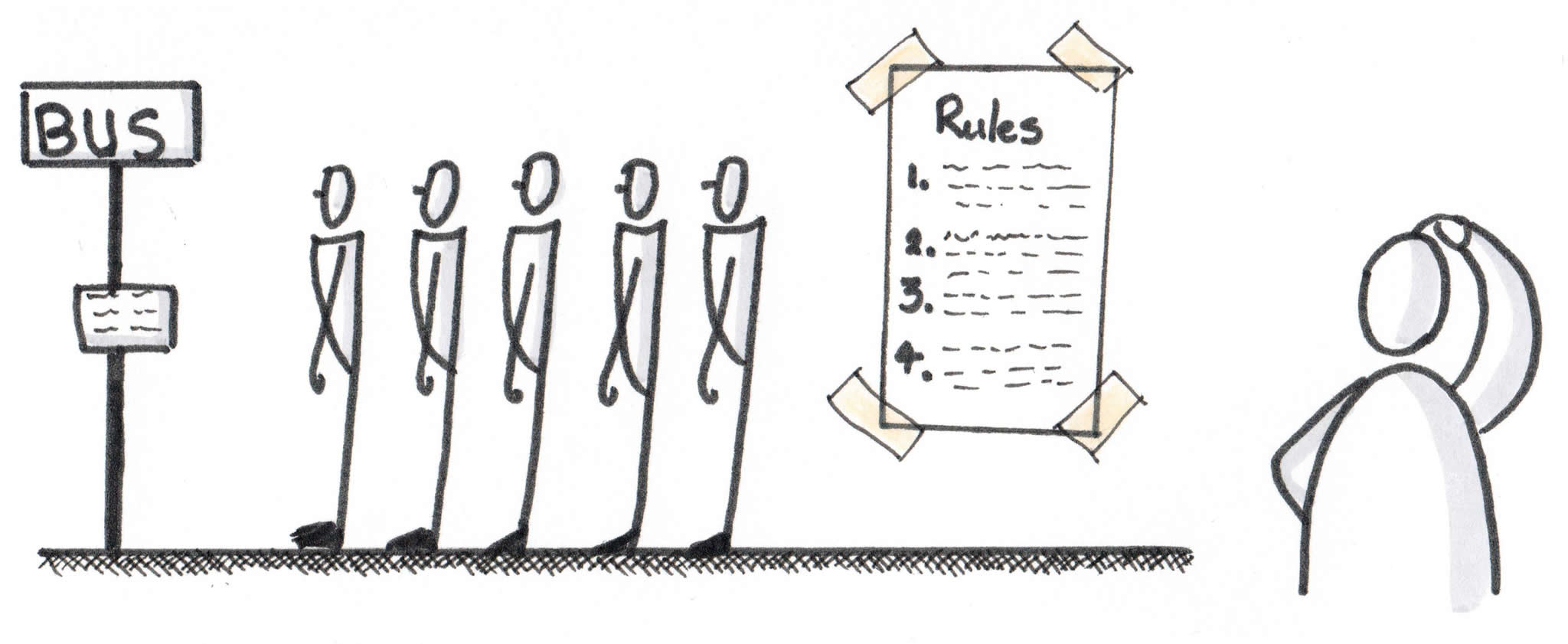Being British and the Art of Queuing

Being British can be a complex business and there is one part of our identity that will confuse ‘Johnny Foreigner‘ no end – Queuing!
It’s something we excel at because from birth your average Brit will be absorbing a series of subtle, imperceptable, esoteric protocols and conventions surrounding this most British of rituals.
Anywhere you have to wait where there are 2 or more people then your average Brit will unconciously form an orderly queue within which strict precedence, order & hierarchy MUST be maintained. Indeed sometimes even your lone Britisher can be observed forming an orderly queue all on his own!
An Institution : The British Queue
According to social historians queuing in a calm, good-natured manner has not always come naturally to the British. Apparently we’ve had to work at it.
Of course the very temporary nature of queues makes it hard to trace their history, but we are told, key historical events seem to have shaped how the British queue – one of which is the industrial revolution. {Secret Smugness Alert : The Industrial Revolution – another British contribution to World History}
The orderly queue seems to have become an established social form in the early 19th Century, as a product of more urbanised, industrial societies which brought masses of people together. This new mass of urbanised poor would have had to queue to access handouts and charity.
However what has really shaped Britain’s reputation as civilised queuers was World War II.
With Britain standing alone against a rampant enemy that had occupied all of Western Europe the Government needed to control a situation in this most uncertain of times. Consequently propaganda at the time was all about doing your duty and taking your turn. The queue became loaded with meaning, drawing on notions of decency, fair play and democracy and the myth of the British as patient queuers was forged.
As the war went on and rationing became ever more stringent it was natural that very long queues would form for everything from food to clothing.
Even when things that weren’t rationed went on sale word would go round and long queues would start to form. People often joined the end of a queue without knowing exactly what it was for, they just hoped it would be something useful.
Analysing ‘The Queue’ – The Power of 6
Those eminant brain boxes at the University College of London have been studying us – and their conclusion : It’s all about the power of 6
6 Minutes : People will wait for six minutes in a queue before giving up.
6 People : People are unlikely to join a line of more than six people
6 inches : Gaps of fewer than 6 inches between people can spark anxiety or stress.
Queuing 101 – The Faux Pas’
The biggest faux pas of all must surely be the ‘push-in’; queue jump at your peril. The public nature of queuing means that queue jumping sparks a “huge sense of injustice” among those in the queue. As evidence we might quote the observations of Dutch psychologist Geert Hofstede, who it appears has been studying us closely as well :
The British believe that inequalities between people should be minimized, and everyone should have the autonomy to pursue goals with equal opportunity.
Other queue ‘no-nos’ include striking up a conversation while queuing and standing on the wrong side of escalators – although this is mainly a complaint of Londoners who feel tourists “misuse” the Underground.
Lastly, one most confusing rule for foreigners is the practice of one person offering their place in the queue to another – no sir that’s simply not cricket!






